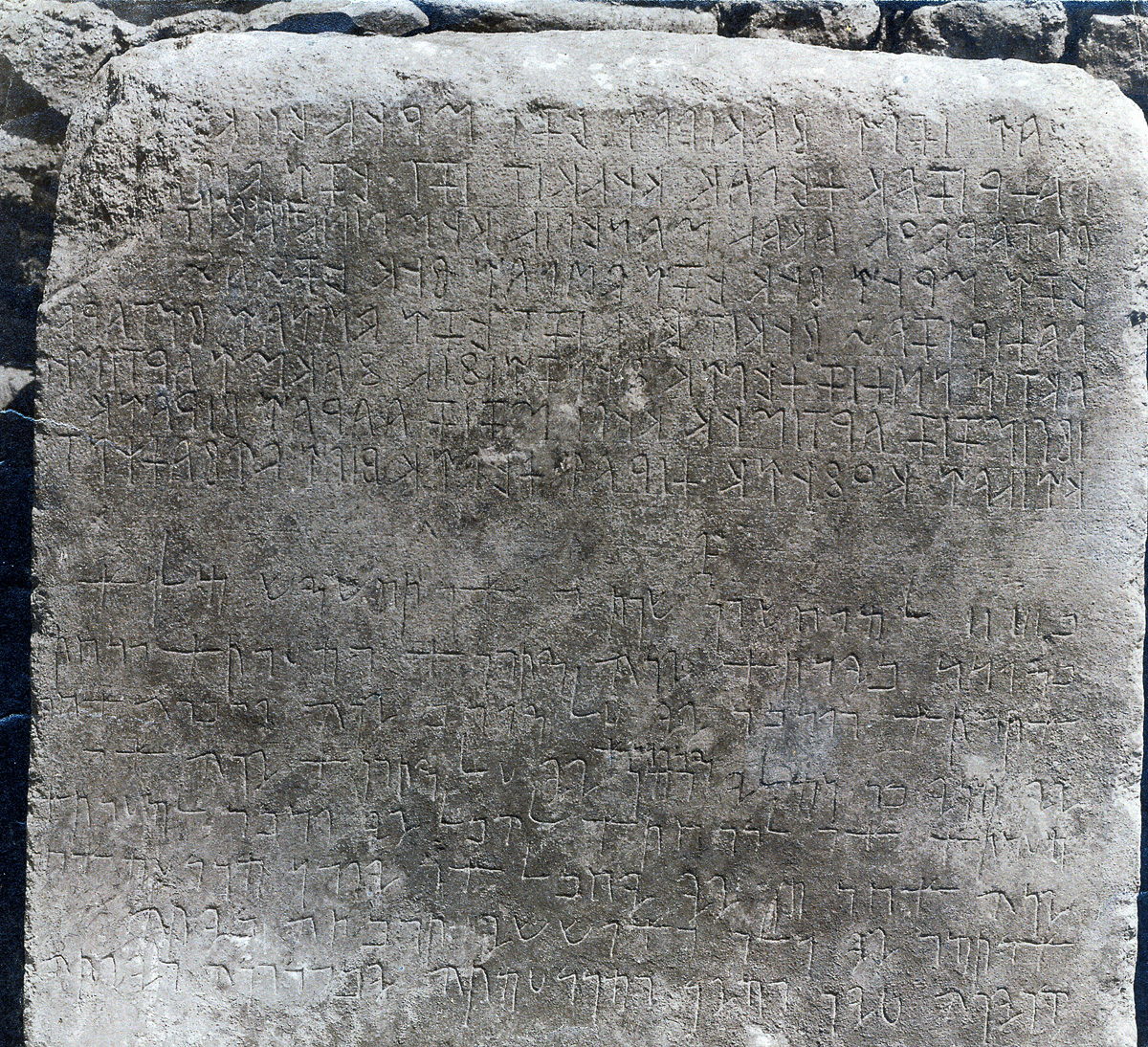Sardis Bilingual Inscription on:
[Wikipedia]
[Google]
[Amazon]
 The Sardis bilingual inscription is a 4th-century BCE bilingual Lydian-
The Sardis bilingual inscription is a 4th-century BCE bilingual Lydian-Sardis VI
"Both pieces were discovered in a thick low wall on the northern slope of the Nekropolis hill west of the Paktolos, about 40 m. above the ravine on which faced the "Stele tomb" (see I, 25 and Vol. I, i p. 116) and about 15 m. above that tomb. In the same wall were also embedded our 2, 5, 6, 8, 9, 10, II, 13, 17, 18 and 19 (in all twelve inscriptions), the flat slabs having been used to strengthen the sides and corners."
The Lydian-Aramaic Bilingual Inscription from Sardis Reconsidered
Anthemion with Lydian-Aramaic Bilingual Inscription, Stele of Manes, Son of Kumlis
* Butler, H.C. 1922. Sardis I: The Excavations, Part 1: 1910–1914. Publications of the American Society for the Excavation of Sardis 1. Leiden: E. J. Brill *
Sardis VI
* Gusmani, R. 1964. Lydisches Wörterbuch, mit grammatischer Skizze und Inschriftensammlung. Heidelberg: C. Winter.
 The Sardis bilingual inscription is a 4th-century BCE bilingual Lydian-
The Sardis bilingual inscription is a 4th-century BCE bilingual Lydian-Aramaic
Aramaic (; ) is a Northwest Semitic language that originated in the ancient region of Syria and quickly spread to Mesopotamia, the southern Levant, Sinai, southeastern Anatolia, and Eastern Arabia, where it has been continually written a ...
funerary inscription discovered in 1912, during the investigation by the American Society for the Excavation of Sardis. It was found in Sardis
Sardis ( ) or Sardes ( ; Lydian language, Lydian: , romanized: ; ; ) was an ancient city best known as the capital of the Lydian Empire. After the fall of the Lydian Empire, it became the capital of the Achaemenid Empire, Persian Lydia (satrapy) ...
, in Manisa
Manisa () is a city in Turkey's Aegean Region and the administrative seat of Manisa Province, lying approximately 40 km northeast of the major city of Ä°zmir. The city forms the urban part of the districts Ĺžehzadeler and Yunusemre, with ...
, Turkey
Turkey, officially the Republic of TĂĽrkiye, is a country mainly located in Anatolia in West Asia, with a relatively small part called East Thrace in Southeast Europe. It borders the Black Sea to the north; Georgia (country), Georgia, Armen ...
.
It was the "Rosetta Stone
The Rosetta Stone is a stele of granodiorite inscribed with three versions of a Rosetta Stone decree, decree issued in 196 BC during the Ptolemaic dynasty of ancient Egypt, Egypt, on behalf of King Ptolemy V Epiphanes. The top and middle texts ...
" for the decipherment of the Lydian language
Lydian is an extinct Indo-European language, Indo-European Anatolian languages, Anatolian language spoken in the region of Lydia, in western Anatolia (now in Turkey). The language is attested in graffiti and in coin legends from the late 8th centu ...
.Woudhuizen, 2005, p. 119
The Aramaic inscription begins by stating the date as the tenth year of Artaxerxes, considered to be Artaxerxes II
Arses (; 445 – 359/8 BC), known by his regnal name Artaxerxes II ( ; ), was King of Kings of the Achaemenid Empire from 405/4 BC to 358 BC. He was the son and successor of Darius II () and his mother was Parysatis.
Soon after his accession, Ar ...
, such that the inscription has been dated by scholars to 394 BCE.
It is currently in the Ä°zmir Archaeology Museum.
The Aramaic inscription is known as KAI 260. An analysis of the inscription was first published in 1917 by Stanley Arthur Cook.
It was found in a secondary location, having been reused in the Greek or Roman era to build a thick low wall on the "northern slope of the Nekropolis hill west of the Paktolos" along with a dozen other inscriptions."Both pieces were discovered in a thick low wall on the northern slope of the Nekropolis hill west of the Paktolos, about 40 m. above the ravine on which faced the "Stele tomb" (see I, 25 and Vol. I, i p. 116) and about 15 m. above that tomb. In the same wall were also embedded our 2, 5, 6, 8, 9, 10, II, 13, 17, 18 and 19 (in all twelve inscriptions), the flat slabs having been used to strengthen the sides and corners."
Bibliography
* Cook, Stanley A. “A Lydian-Aramaic Bilingual.” The Journal of Hellenic Studies, vol. 37, 1917, pp. 77–87. JSTOR, www.jstor.org/stable/625457 * Torrey, C. (1918). The Bilingual Inscription from Sardis. The American Journal of Semitic Languages and Literatures, 34(3), 185-198 http://www.jstor.org/stable/528643 * * Hanfmann, G. (1976). ON LYDIAN AND EASTERN GREEK ANTHEMION STELAI. Revue Archéologique, (1), 35–44. Retrieved May 22, 2021, from http://www.jstor.org/stable/41747583 * Fred WoudhuizenThe Lydian-Aramaic Bilingual Inscription from Sardis Reconsidered
Anthemion with Lydian-Aramaic Bilingual Inscription, Stele of Manes, Son of Kumlis
* Butler, H.C. 1922. Sardis I: The Excavations, Part 1: 1910–1914. Publications of the American Society for the Excavation of Sardis 1. Leiden: E. J. Brill *
Sardis VI
* Gusmani, R. 1964. Lydisches Wörterbuch, mit grammatischer Skizze und Inschriftensammlung. Heidelberg: C. Winter.
References
{{reflist 4th-century BC artifacts 4th-century BC inscriptions Aramaic inscriptions KAI inscriptionsBilingual inscription
In epigraphy, a multilingual inscription is an inscription that includes the same text in two or more languages. A bilingual is an inscription that includes the same text in two languages (or trilingual in the case of three languages, etc.). Mult ...
Lydian language
Multilingual texts
Archaeological discoveries in Turkey
1912 archaeological discoveries